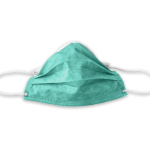Businesses must craft smart reopening plans – here’s where to start

Right now, Australian businesses are operating under strict restrictions due to the coronavirus (COVID-19). In most places, remote work is the only viable option. And even in situations when retail or office locations are open, they’ve had to reinvent their standard operating procedures to make sure to keep employees safe while on the job.
The good news is that Australia’s showing signs that it’s making excellent progress in containing the spread of coronavirus. For business owners who are anxious to get back to some semblance of normal operations, that means the time is now to start game-planning how to do it. A solid reopening plan will be an absolute requirement to keep workers and customers safe and prevent a resurgence of the deadly disease. To help business owners start the process, here’s a basic outline of what to include in their reopening plan.
A top-to-bottom cleaning
The first stage in any plan to reopen has to include a thorough cleaning of the business’s facilities. Failure to do this first could mean that employees and customers will return to a location that’s going to reintroduce the pathogen into the community. Even though we now have a decent understanding of how long the coronavirus can last on various surfaces, there’s no way to tell how it would fare in complex environments like offices and retail shops.
To get the job done right, businesses need to engage the services of a well-established commercial cleaning company. They’ll have the tools, supplies, and knowledge necessary to make sure that every area of a business’s facilities is effectively sanitized and is ready to be reoccupied. According to commercial cleaning industry veteran Darius Milocevic, business owners should start reaching out now to make arrangements.
He advises, “When the restrictions are lifted nationwide, there’s going to be a rush of companies all competing to get their facilities ready to open first. Owners that get on waiting lists now will win that competition and be able to reopen fastest.”
A staggered shift schedule
It’s important to remember that the path to reduced restrictions is going to happen in stages. In other words, even when businesses reopen, they’ll still have to follow certain caps on occupancy and adhere to other limits on their operations. Without knowing the exact nature of the changes, the best thing businesses can do now is to start work on a plan based on some basic common-sense assumptions.
The first thing to do is determine which employees can keep working from home without significantly hobbling the business. With those employees out of the mix, there will be less traffic in the business’s facilities, which is an excellent first step. The next thing to do is assess the roles of the other employees to design a staggered work schedule that aims to have no more than one-third of the remaining workforce on-site at any one time. This is the same tactic that the construction industry has used throughout the crisis to enhance worker safety, and it’s likely that other reopening businesses will soon be asked to do the same.
Provide masks and curb travel
No matter how it’s accomplished, the reopening of businesses in Australia does come with some risk attached. Since some coronavirus sufferers are asymptomatic, simply asking sick workers to stay home offers no guarantee of safety for everyone else. To work around that, businesses planning to reopen should be taking steps now to procure high-quality masks for returning employees to use.
To avoid complicating matters for hard-pressed hospitals who still face mask shortages, a good way to get what’s needed is to begin efforts to make needed masks in-house. There are easy-to-follow instructions on creating face masks with HEPA filtration that employees can make themselves if the business can provide the necessary materials. By starting now, it should be possible to have a solid supply that’s ready to go when the time comes to reopen.
In addition to providing employees with masks on their return, it’s also a good idea to lay out plans to curb unnecessary employee travel in the months following the crisis. For situations where travel is a must, the business should provide for a post-trip isolation period for each affected employee. That will help to reduce the risk of infection from out-of-community contacts the workers might have in their travels. Although inconvenient, businesses need to use measures like these to err on the side of caution when they reopen. The alternative is a recurrence of the disease which could force further economic disruption – and nobody wants to see that happen.
A safe reopening
With careful planning, businesses in Australia should soon be able to get back to work while keeping their employees and customers safe from harm. Of course, the government may yet require additional steps for businesses to follow when the time comes. There’s a good chance, however, that the three topics covered here will be among them, so they’re a great place to start at least. For business owners who are used to taking action rather than sitting on the sidelines, that means it’s time to get to work.
How is your business going to do things differently post COVID-19?
Share your thoughts. Post a comment on First 5000 – Have your Say on LinkedIn or email editor@first5000.com.au with your story.
Andrej Kovacevic is a digital marketing specialist and a tech evangelist with 8 years of experience helping small businesses of all kinds build brands that get noticed and drive sales. Andrej is a writer at WriterZone and an avid technology media consumer, with a keen interest in topics related to IoT, Fintech, and Big Data.








